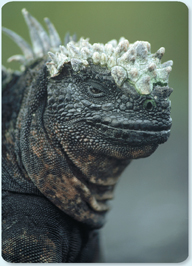25 Study Guide
 Unity and Diversity of Life
Unity and Diversity of Life
Animals are multicellular, heterotrophic, eukaryotic organisms whose cells lack cell walls.
25.1 What Is an Animal?
 Animals, members of the kingdom Animalia, are multicellular, heterotrophic, eukaryotic organisms whose cells lack cell walls.
Animals, members of the kingdom Animalia, are multicellular, heterotrophic, eukaryotic organisms whose cells lack cell walls.
 Invertebrates include all animals that lack a backbone, or vertebral column.
Invertebrates include all animals that lack a backbone, or vertebral column.
 All chordates exhibit four characteristics during at least one stage of life: a dorsal, hollow nerve cord; a notochord; a tail that extends beyond the anus; and pharyngeal pouches.
All chordates exhibit four characteristics during at least one stage of life: a dorsal, hollow nerve cord; a notochord; a tail that extends beyond the anus; and pharyngeal pouches.
 Like all organisms, animals must maintain homeostasis by gathering and responding to information, obtaining and distributing oxygen and nutrients, and collecting and eliminating carbon dioxide and other wastes. They also reproduce.
Like all organisms, animals must maintain homeostasis by gathering and responding to information, obtaining and distributing oxygen and nutrients, and collecting and eliminating carbon dioxide and other wastes. They also reproduce.
invertebrate (730)
pharyngeal pouch (731)
chordate (731)
vertebrate (731)
notochord (731)
feedback inhibition (732)


25.2 Animal Body Plans and Evolution
 Features of animal body plans include levels of organization, body symmetry, differentiation of germ layers, formation of body cavities, patterns of embryological development, segmentation, cephalization, and limb formation.
Features of animal body plans include levels of organization, body symmetry, differentiation of germ layers, formation of body cavities, patterns of embryological development, segmentation, cephalization, and limb formation.
 Animal phyla are typically defined according to adult body plans and patterns of embryological development.
Animal phyla are typically defined according to adult body plans and patterns of embryological development.
radial symmetry (738)
bilateral symmetry (738)
endoderm (738)
mesoderm (738)
ectoderm (738)
coelom (738)
pseudocoelom (738)
zygote (739)
blastula (739)
protostome (739)
deuterostome (739)
cephalization (740)
Think Visually Using information from this chapter, complete the following concept map.
Table of Contents
- Formulas and Equations
- Applying Formulas and Equations
- Mean, Median, and Mode
- Estimation
- Using Measurements in Calculations
- Effects of Measurement Errors
- Accuracy
- Precision
- Comparing Accuracy and Precision
- Significant Figures
- Calculating With Significant Figures
- Scientific Notation
- Calculating With Scientific Notation
- Dimensional Analysis
- Applying Dimensional Analysis





